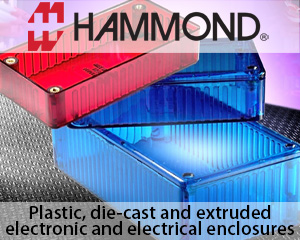The new HAR 37xy Hall-effect sensors offer redundant high-precision angle and linear position measurement in a small SOIC8 package for demanding automotive and industrial applications.
Freiburg, September 29, 2015 – Micronas announces the extension of its direct-angle Hall-effect sensor family HAL 37xy with its dual-die variant HAR 37xy. It integrates two fully automotive-qualified silicon dies in a single SOIC8 package for high-precision direct-angle and linear position measurements for the most demanding automotive and industrial applications. HAR 37xy sensors follow the trend of enabling true redundancy within a small package to support safety-critical automotive applications according to ISO 26262 rules.
The sensors are well suited for angle measurement, as well as for linear position detection in automotive and industrial applications and operate in a junction temperature range from –40 °C to 170 °C. They can be employed within gearboxes for clutch position detection, in ride-height modules, as well as within many more applications, e.g. motor air management, such as EGR (Exhaust Gas Recirculation), throttle position, or turbo charger actuators. For storing calibration parameters, the sensor is equipped with a high-temperature resistant non-volatile memory.
Each HAR 37xy sensor contains two dies, which are glued upon each other (stacked die). They operate fully independently – mechanically separated and electrically insulated from one another. The electrical connections of each die are bonded to opposite sides of the package, thus preventing shortages between both dies. The stacked-die construction offers the advantage that the two Hall elements measure almost the same magnetic field, therefore ensuring synchronous output signals.
Sensor solutions with redundancy in a single package reduce system costs while at the same time increasing the reliability of the system due to smaller PCBs and less solder joints. Occasionally, the PCB design already considers redundancy functions. In such a case, the customer can choose a single-die or a dual-die sensor for assembly. HAR 37xy comes in the same SOIC8 package as its parent family, the single-die HAL 37xy. This leads to significant advantages: Customers already employing the single-die version can save most of the redesign efforts and can achieve fast time-to-market re-using the same magnetic circuit and module outline. Thanks to the same X/Y positioning of the Hall elements, customers can use smaller magnets for their design compared to competitive solutions.
The unique “virtual offset” of the HAR 37xy variant helps customers to further reduce magnet costs. This special feature supports linear position detection up to 40 mm while using small magnets with a length of less than 10 mm. Thanks to this feature, magnet size can be reduced by roughly 30 percent without loss of performance. Thus, high-precision measurements with small magnets can now be easily realized.
The key for excellent angular performance is the ability to evaluate the relative strength out of the horizontal and vertical magnetic field components. The HAR 37xy sensors use a so-called pixel cell, which consists of one horizontal (BZ) and two vertical (BX, BY) Hall elements. The pixel cell measures three magnetic field vector components at one point. Magnetic field lines in parallel to the sensor surface are detected by the vertical Hall elements, whereas the component perpendicular to the chip surface is captured by the horizontal Hall element.
Samples of the HAR 37xy sensors are available as of today. Easy-to-use LabViewTM-based software and high-quality application notes accelerate development, even for novice magnet system designers.
Start of production is planned for the beginning of 2016.







